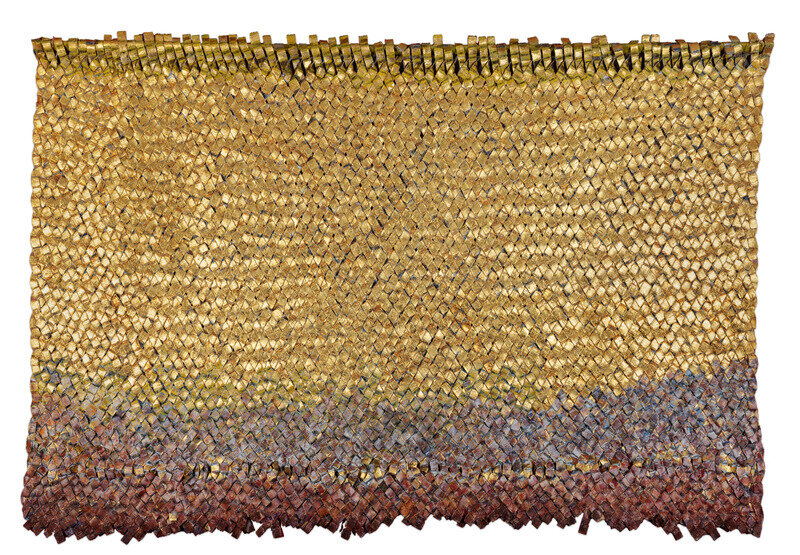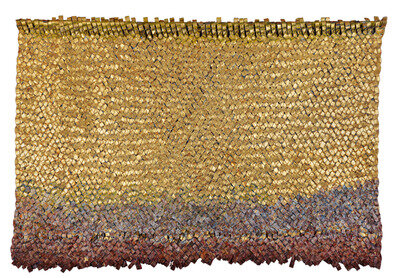Condition Report
Contact Information
Auction Specialists
Lot 73A
Olga de Amaral
(Colombia, b. 1932)
Cesta Lunar 35, 1989-90
Sale 1327 - Post War and Contemporary Art
Apr 24, 2024
10:00AM CT
Live / Chicago
Own a similar item?
Estimate
$80,000 -
120,000
Price Realized
$304,800
Sold prices are inclusive of Buyer’s Premium
Lot Description
Olga de Amaral
signed Olga de Amaral, titled, dated and inscribed no. 599 (verso)
46 x 69 inches.
Property from the Collection of Jane Berger, Naples, Florida
(Colombia, b. 1932)
Cesta Lunar 35, 1989-90
paint and gold leaf on fiber
signed Olga de Amaral, titled, dated and inscribed no. 599 (verso)
46 x 69 inches.
Property from the Collection of Jane Berger, Naples, Florida

